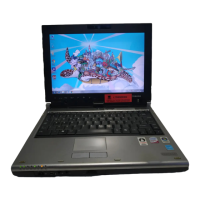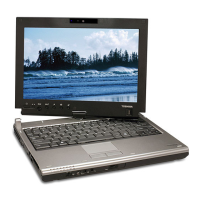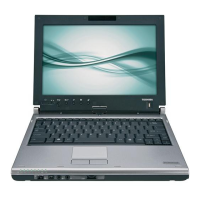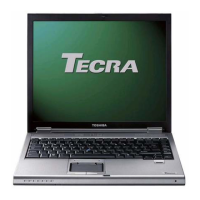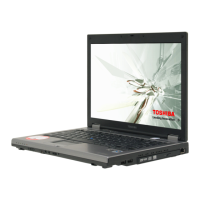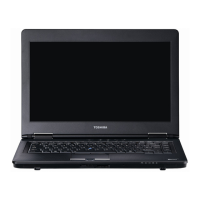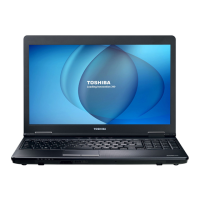
Do you have a question about the Toshiba M700/M710 and is the answer not in the manual?
| Processor | Intel Core 2 Duo |
|---|---|
| Chipset | Intel GM965 Express |
| RAM | Up to 4GB DDR2 |
| Storage | 80GB to 250GB HDD |
| Display | 1280x800 |
| Graphics | Intel GMA X3100 |
| Operating System | Windows Vista |
| Battery | 6-cell lithium-ion |
| Optical Drive | DVD SuperMulti drive |
| Wireless | 802.11a/g/n |
| LAN | Gigabit Ethernet |
Contains information on safe and proper use, reducing physical stress.
Verify all included hardware items are present after unpacking the computer.
Details the partition for system recovery files used to repair or restore the system.
Identifies ports and slots on the computer's left side, including USB and PC Card slots.
Describes the computer's hardware components, including CPU, memory, power, and disks.
Details pre-installed utilities and applications for system management and functionality.
Lists optional devices and accessories that can expand the computer's capabilities.
Highlights unique or advanced features that enhance computer convenience and usability.
Explains how to use pointing devices like Touch Pad and Tablet PC Pen for computer operation.
Details how to use the Tablet PC Pen for actions, data entry, and pen tip replacement.
Provides instructions on how to change modules like optical disc drives or HDD adaptors.
Explains how to load, unload, and use CD/DVD drives, including region codes.
Describes the twelve function keys and their programmed or FN key combinations.
Explains how the FN key combines with other keys to form soft keys for feature control.
Lists key combinations to enable/disable specific computer features like sleep, brightness, or volume.
Details the numeric keypad overlay for data input and cursor control when activated.
Explains how AC adaptor connection and battery status affect computer operation and indicators.
Describes how to interpret system indicators for battery, DC IN, and power status.
Details the different types of batteries available for the computer and their usage.
Provides tips to maximize battery operating time and retention with power off.
Instructions on how to run the TOSHIBA HW Setup program to configure computer settings.
Explains how to select the priority for booting the computer from various devices.
Feature to turn on computer via LAN signal; requires AC adaptor connection.
Guidelines for resolving problems by stopping, observing, and documenting the issue.
Simple checks for common issues like peripheral connections, media loading, and cable attachments.
Questions to consider when identifying the cause of a computer malfunction.
Summarizes the computer's physical dimensions, including weight and size.
Details the operating and non-operating conditions for ambient temperature and relative humidity.
Explains how the display controller interprets commands for screen output, resolution, and colors.
Describes how to configure video mode settings via Display Properties for optimal screen display.
Describes AT commands for data mode, including format, escape sequence, and result codes.
Explains how to display and modify S-register values that control modem functions.
Details the V.90 modem technology, speeds, and connection requirements.
Lists specifications for the Wireless LAN card, including form factor and compatibility.
Describes radio characteristics of Wireless LAN cards, including frequency and range factors.
Provides procedures for manually setting up Windows Vista operating system with the storage manager.
Discusses health considerations and safety guidelines for Bluetooth wireless technology use.
Outlines compliance with country-specific regulations for Bluetooth devices.
Lists certification agencies for AC power cords and connectors in different regions.
Explains how to set up a timer-activated BIOS password for theft protection.
Notes that not all features may be present on all models, despite icons shown.
Details legal footnotes on CPU performance variations under specific operating conditions.
Explains how main system memory is used for graphics, affecting availability for other tasks.
Lists common abbreviations used in the manual with their full meanings.
